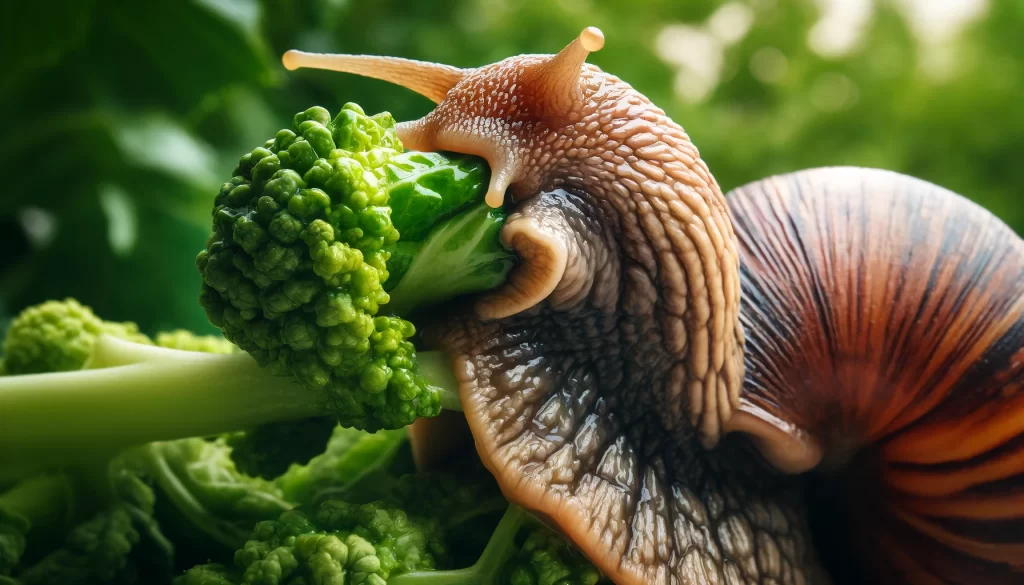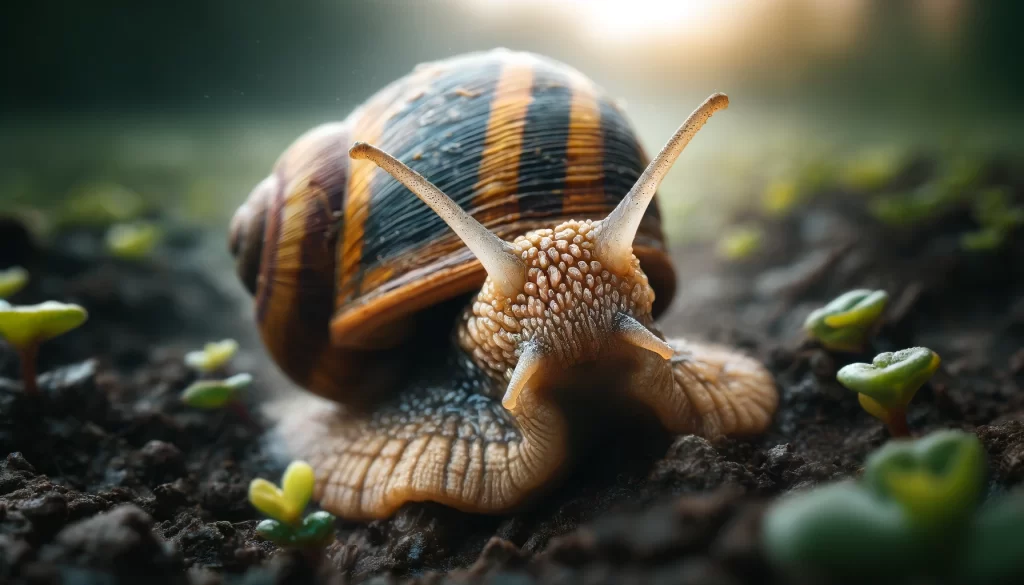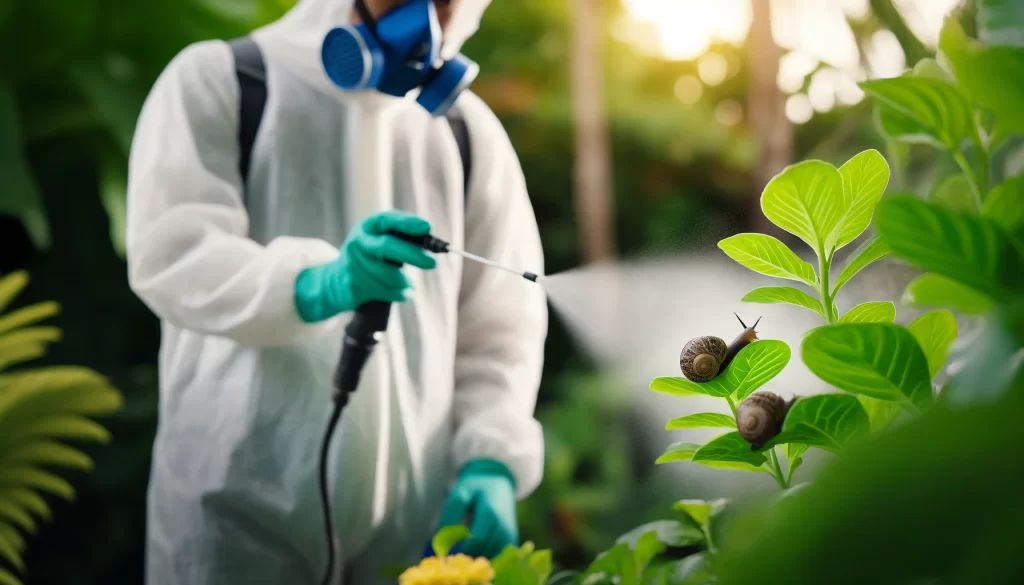Garden Snail or Slug Infestation
Garden snails and slugs are common creatures in gardens that can become problematic pests when they multiply excessively. They are mollusks belonging to the group of gastropods and share some characteristics, such as their soft, slimy bodies, as well as their tendency to feed on plant matter.

The common scientific name for garden snails is “Cornu aspersum,” although they were previously known as “Helix aspersa.” This snail species is native to Europe but has been introduced to many parts of the world due to its adaptability and is often considered a pest in gardens and crops.
These creatures are typically more active during the night and in humid conditions, making them a particular threat to tender plants and young shoots. They feed on a wide variety of plants, which can result in significant damage to gardens and crops.
Feeding Habits of Garden Snails and Slugs
Garden snails are herbivores and primarily feed on plant matter. They consume a wide variety of plants, including leaves, tender shoots, flowers, and fruits. They are known to be particularly fond of green leafy vegetables such as lettuce and spinach, as well as ornamental plants and vegetables in general.

These snails can also consume fungi and decomposing plant debris. Their diet is based on any plant material they find available in their environment, which can include a wide range of plants cultivated in gardens and orchards.
Life Cycle of Garden Snails or Slugs
The life cycle of garden snails, such as Cornu aspersum, follows a typical pattern for many gastropod mollusks. This cycle can vary in duration depending on factors such as temperature and food availability. Here’s a summary of the main stages:
- Egg: The life cycle begins with egg laying. Garden snails are hermaphrodites, meaning each individual can produce both eggs and sperm. They deposit eggs in protected and moist places, such as under stones or in the soil.
- Hatching: After an incubation period that can last several weeks, the eggs hatch and release small offspring called “lumachellas.” These offspring are tiny and have a transparent, soft shell.
- Youth: During this stage, young snails grow slowly and begin to develop their shells. They feed on plant matter and move slowly in search of food and shelter.
- Sexual Maturity: As snails mature, they reach sexual maturity, which usually occurs when they are between 6 months and 1 year old, depending on environmental conditions. At this point, they can reproduce and lay eggs.
- Adult Life: Adult snails continue to feed and reproduce as they find suitable conditions in their environment. They can live several years under favorable conditions.

Control, Prevention, or Elimination of Garden Snails or Slugs
Controlling slugs and snails in gardens can involve a combination of preventive, physical, cultural, and chemical methods. Here are more details on each:
Garden Maintenance
Keeping the garden clean and tidy can help reduce hiding areas for slugs and snails. Remove debris, fallen leaves, and any other organic matter that may serve as shelter for them during the day.
Manual Control
Handpicking slugs and snails is an effective way to control their population, especially in small areas or organic gardens where chemical use is preferred to be avoided. Perform this activity during the night or early morning when these creatures are most active.

Physical Barriers
Installing physical barriers around vulnerable plants can help prevent slugs and snails from reaching them. You can use materials such as sharp edges, crushed eggshells, wood ash, diatomaceous earth, or commercially designed products specifically for this purpose.
Traps
Traps can be used to attract and capture slugs and snails. Some traps are containers buried at ground level and filled with beer or a solution of water and yeast, which attract the mollusks and drown them. Traps can also be placed under boards or other objects that provide shelter to these creatures.
Chemical Control
Baits and chemicals can be used for slug and snail control. Metaldehyde-based baits are common and effective. These baits attract slugs and snails, which consume them and die. However, it’s important to use these products cautiously and according to manufacturer instructions to avoid environmental damage and harm to non-target organisms.

Crop Rotation
Rotating crops in the garden can help reduce slug and snail populations, as it makes it difficult for these pests to find their favorite foods consistently.
Promotion of Natural Enemies
Some animals, such as toads, hedgehogs, birds, and certain species of predatory insects, feed on slugs and snails. Encouraging the presence of these natural enemies in the garden can help control pest populations naturally.
 AgronoBlog – Agriculture Blog
AgronoBlog – Agriculture Blog 